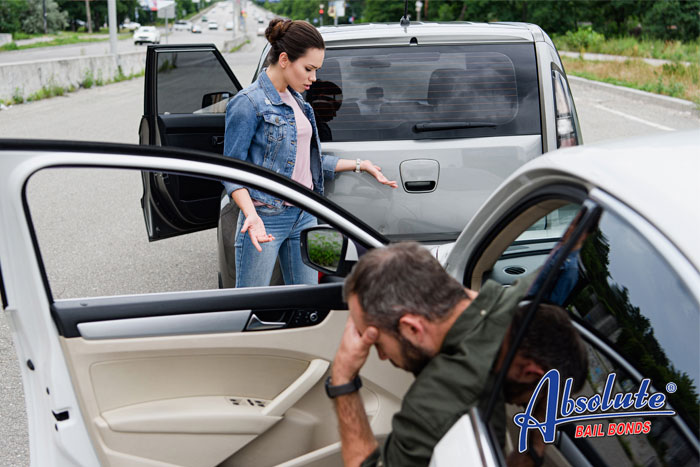
California Stalking Laws
In California, you can be convicted of stalking even if you have never engaged in actively pursuing a victim as they went about their daily activities. It’s even possible to be found guilty of California’s stalking laws if you’ve never had a face-to-face encounter with the victim. The reason for this is because California lawmakers have written the state’s stalking laws in such a way that they encompass a variety of acts that include harassment, even if that harassment only takes place in the form of letters, social media posts, or phone calls.
The issue of stalking in California is addressed in Penal Code 646.9 PC. The laws states, “Any person who willfully, maliciously, and repeatedly follows or willfully and maliciously harasses another person and who makes a credible threat with the intent to place that person in reasonable fear for his or her safety, or the safety of his or her immediate family is guilty of the crime of stalking.”
The interesting thing about California’s stalking laws is that contacting someone via social media posts, making phone calls, and following them around isn’t always considered stalking. While these things may result in a police report getting filed, to convict you of stalking, the prosecution must prove that your actions/words threatened the victim so that they feared for either their life or their safety.
One of the interesting things about California’s stalking laws is that they are wobbler offenses. That means you could be charged with misdemeanor or felony stalking. There have even been instances where a person was charged with both misdemeanor and felony stalking. The bulk of stalking convictions in California are misdemeanors.
If you’re convicted of one count of misdemeanor stalking in California, the judge can sentence you to a full year in county jail, fine you up to $1,000, and misdemeanor probation. If convicted of felony stalking, your sentence can include up to five years in a state prison, felony probation, and a fine.
While stalking charges involve threatening a victim, if that victim is hurt as a result of your actions, you’ll likely be charged with assault and intimidation in addition to stalking.
Criminal charges could represent one of the problems you face following a California stalking case. Many stalking victims also decide to file a civil case against their stalker. The purpose of the civil case is to gain financial compensation for the mental anguish they suffered as a result of the stalking episode.

What is Felony Stalking
While everyone knows that stalking is a crime, few realize that it can be a felony or a misdemeanor and in some cases, the accused might be charged with both a felony and a misdemeanor.
Every single state has stalking laws. While the nuances of stalking laws vary from one state to another, for the most part, each state has the same description of what can be considered stalking. As a rule, any behavior that can be considered prolonged harassment, an obvious attempt to frighten someone, the unwanted monitoring of a person, using proximity to threaten a person, or actions that lead to emotional distress is covered by stalking laws.
Anyone who engages in the following types of behavior will likely be charged and convicted of stalking in California:
- Going out of your way to follow a person
- Frequently showing up at locations where you know a specific person will be
- Using GPS to monitor a person’s movements
- Constantly filming/photographing someone without their permission
- Obsessively monitoring someone’s social media accounts, phone calls/texts, reading their emails, and studying their computer activities
- Going out of your way to gather as much information as you can about a specific person
- Leveling threats against a person or their loved ones (including pets) if they don’t spend time with you
- Instigating property damage
- Sending gifts and other forms of communication after you’ve been told to stop doing so
While it’s true that it can sometimes be difficult to determine when stalking crosses the line from a misdemeanor and becomes a felony, the general rule of thumb is that anything that seems more intense than simple harassment will likely be considered a case of felony stalking.
The exact punishment a person receives following a stalking conviction in California often varies from one case to the next. When handing down a sentence, the judge looks at a variety of factors, including:
- Your criminal history
- The type/intensity of the stalking episodes
- If the victim had a POP order that you ignored
- If anyone was hurt because of your actions
The sentence for a misdemeanor conviction can include spending a maximum of one year in county jail and being required to pay a fine that doesn’t exceed $1,000. In most cases, you’ll also be told that you’re legally required to stay away from your victim and that you’re also not allowed to contact them.
The sentence for a felony stalking conviction in California can include spending three years in state prison. If you have prior stalking convictions on your record, you could be sentenced to five years in prison.

Documenting a Car Accident
If you haven’t been in a car accident yet, you should consider yourself lucky. Considering how much time we spend behind the wheel, the odds are good that sooner or later you’ll be involved in one. Because of the likelihood of getting into a car accident, it’s important to know what the proper protocol is during an accident.
The first thing you need to do is make sure neither you nor anyone else is hurt. If there are injuries, call for medical help and do as much first aid as possible. During this, you should also contact the police.
When there are injuries, dealing with those should always be your first priority. Let the police handle writing up the details of the accident.
If there aren’t any injuries, you should still call the police, but while you’re waiting for them to arrive on the scene, take some time to create your own documentation of the accident. Thanks to the installed camera inside your smartphone this is easier than ever. All you have to do is whip it out and start snapping photos.
Having clear accident scene photos is extremely important. Unlike a police report that can be dismissed by a judge as hearsay, the photos you snap at the accident can be used during a civil trial. Your insurance company might even use them as they try to determine how the accident happened and who is at fault. The photos also help provide proof of who actually witnessed the accident.
When you’re snapping photos, you’ll want to take pictures of both vehicles, anyone who is standing nearby, and the local landscape. Make sure you include shots of road signs, objects that could have helped cause the accidents, intersections, and traffic lights.
As soon as you can, sit down and write your own account of what happened in the moments leading up to the car accident. You should do this even if you believe the accident was your fault. Once you’ve completed writing your own report, save it and the photos you snapped somewhere safe. It’s really in your best interest to store copies in multiple places, such as one set in a cloud storage unit, a few more saved to various email locations, and maybe a hard copy in your filing cabinet.
You need to keep the photos and your account of the accident for a full two years. After two years, California’s statute of limitations for car accidents kicks in and you’ll no longer have to worry about a civil lawsuit.

